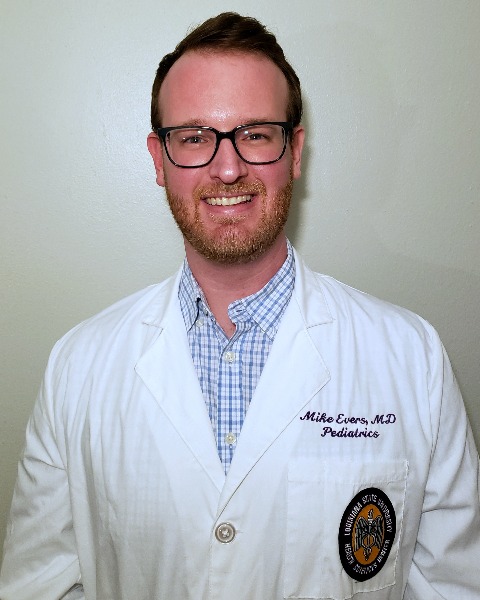Neonatal Quality Improvement 2
Session: Neonatal Quality Improvement 2
067 - Advancing Care Standards: Initiative to Improve Management of Patients with Hypoxic Ischemic Encephalopathy in a tertiary care NICU
Friday, April 25, 2025
5:30pm - 7:45pm HST
Publication Number: 67.3740
Michael Evers, Louisiana State University School of Medicine in New Orleans, New Orleans, LA, United States; Michelle Knecht, Louisiana State University School of Medicine in New Orleans, New Orleans, LA, United States; Christy Mumphrey, Louisiana State University School of Medicine in New Orleans, Metairie, LA, United States; Kayla L. Pence, Children’s Hospital of New Orleans, New Orleans, LA, United States; Raegan Gupta, LSU Health Sciences Center New Orleans, Metairie, LA, United States; Lauren Richard, Children's Hospital of New Orleans, New Orleans, LA, United States; David Sciacca, LCMC Health, New Orleans, LA, United States; Emily K. Turner, Children’s Hospital- New Orleans, New Orleans, LA, United States; Lisl Antee, Children's Hospital New Orleans, New Orleans, LA, United States; Jacqueline F. Schnapp, Louisiana State University School of Medicine in New Orleans, Slidell, LA, United States; Kathleen A. Vincent, Children's Hospital, New Orleans, LA, United States; Julie Gallois, Louisiana State University School of Medicine in New Orleans, New Orleans, LA, United States

Michael Evers, MD (he/him/his)
Fellow
Louisiana State University School of Medicine in New Orleans
New Orleans, Louisiana, United States
Presenting Author(s)
Background: Hypoxic Ischemic Encephalopathy (HIE) is a potentially devastating type of brain injury that affects newborns due to brain oxygen deprivation in the peripartum period. Therapeutic Hypothermia (TH) is proven to reduce death and disability for infants with moderate-severe HIE. The therapeutic window to achieve TH goal temperature is six hours to slow recovery of the oxidative metabolism/acidosis before onset of the latent phase of cerebral injury. For patients with HIE, there are unique time frames to best provide prognostication and assess sequelae including MRI timing and seizure screening. Vermont Oxford Network statistics report HIE as 1.8% of all admissions, but our center has a higher volume at 9.8%. Upon review of our data, our guidelines needed standardization regarding temperature management and imaging timing.
Objective: Our aims were to decrease variation in passive and active transport cooling temperatures, increase the percentage of infants achieving target temperature within 6 hours, increase the percentage of infants receiving an EEG on admission and rewarming, and increase the percentage of infants receiving an MRI on day of life 4-6.
Design/Methods: This is a longitudinal quality improvement initiative including data from Jan. 2021 to Oct. 2024 at an academic, urban, regional level IV NICU. A multidisciplinary team including neonatologists, neurologists, nurse practitioners, nurses, and family partners was created. Interventions included the development and education of a passive cooling protocol for six referral hospitals and the revision and implementation of our HIE protocol. Bi-monthly audits were conducted, control charts updated, and there were frequent tests of change.
Results: 58 patients with HIE received TH during our 45 month study period. Improving trends were found for reduced hypothermia through passive cooling, goal temperature ranges for active transport cooling, infants achieving target temperature within 6 hours, infants receiving an EEG on admission and upon rewarming, and infants receiving an MRI on day of life 4-6
Conclusion(s): Multidisciplinary team involvement using a quality improvement approach can effectively and sustainably improve care for patients with HIE. Our keys to success included parental and community hospital involvement, support from hospital administration for updated equipment, adequate availability of EEG/MRI, and a motivated multidisciplinary team. Future improvement cycles can expand to improve developmental referral rates, early intervention services, admission literature, reduced seizure medications at discharge, and reduced opioid exposures.
Key Driver Diagram, Advancing Care Standards: Initiative to Improve Management of Patients with Hypoxic Ischemic Encephalopathy in a tertiary care NICU
Key Driver.jpeg
Time to Goal Target Temperature for Patients with HIE Undergoing Therapeutic Hypothermia
.png) 1. Passive cooling education to transport team and community referral hospitals performed. 2. Revised guidelines and protocol published. 4. Cooling mattresses unavailable on transport. 4. Cooling mattresses available again on transport.
1. Passive cooling education to transport team and community referral hospitals performed. 2. Revised guidelines and protocol published. 4. Cooling mattresses unavailable on transport. 4. Cooling mattresses available again on transport.EEG Performed on Admission for Patients with HIE Undergoing Therapeutic Hypothermia
.png) 1. Updated smart phrase in EMR to reflect accurate timing of EEG. 2. Revised guidelines and protocol published. 3. No HIE admissions.
1. Updated smart phrase in EMR to reflect accurate timing of EEG. 2. Revised guidelines and protocol published. 3. No HIE admissions.

